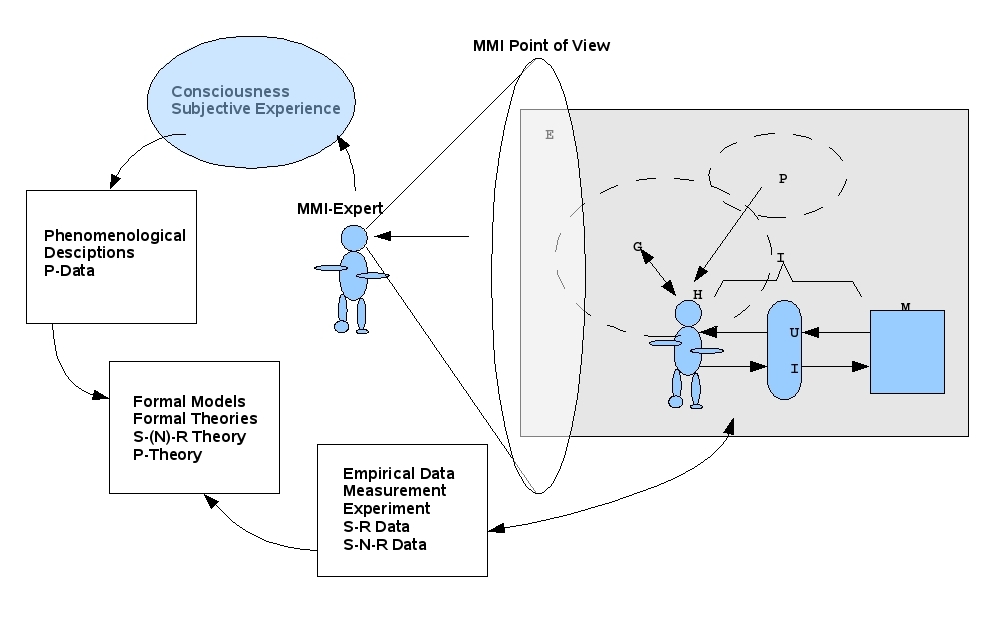
HMI/MMI/HCI
|
As outlined in the MMI
Process is one of the main intentions of MMI the
investigation and
evaluation of the usability of a certain machine interacting with a
human person. The ideal of a HMI-Interface is that the interface fits
well within the usual human way of interactions with the real world. To
fulfill this requirement it suffices in the general case to investigate
the 'common' limits of the human cognitive and motoric abilities and to
design and implement machines which can meet these limits (cf. (Dahm,
M., 2006:ch.3-5), (Heinecke, A.M.,2004:ch.3-5))
 |
| Figure: MMI Process |
To identify the biological limits of a human person engaged in an interaction one has to know which capabilities are necessary to be able to interact. In one view one can distinguish the following aspects:
Perceiving the relevant properties (stimuli, S)
Generate the right actions (responses, R)
Having an adequate internal model for interpretation, evaluation, planning and decision
Having an adequate ability to learn the necessary facts, relations and dynamics
Having an adequate ability to adapt the learning if the conditions are changing
The task of investigation of all these limits is highly demanding and surely far from being solved. One of the main reasons for the difficulty besides the inherent complexity of the subject is the fact, that the human person as such is a dynamical entity which is changing during the whole course of its life. The newborn, the baby, the children, the young people, the parents, the 40ties,... the handicapped, the elderly, the aging, the seniors,.... this mixed up with different kinds of educational training, different kinds of experiences, etc.
Take as example the technical system mobile phone: young people are learning very quickly how to use this machine and how to communicate with it. Elderly people (70 years and older) having severe problems because their memory is mostly weakened and they cannot remember the sequence of buttons which are needed to operate the machine 'normally'. This kind of difficulty happens with most machines which are in the living space: TV-Set, Washing machine, radio and audio equipment, computer etc. Thus the biological limits of the memory system as part of the perception-action cycle are below the necessary preconditions for using these machines.
An overview about important properties of human behavior
needed in human machine interactions could read as follows:
Perception
Vision
Hearing (acoustic)
Tactile (Touch, pressure, heat and cold)
Pain
Smell (olfactoric)
Taste (gustatoric)
Balance (linear acceleration, angular acceleration)
Muscle (vascular pressure, muscle stretch, muscle tension, joint position
Actions (responses, R)
Having an adequate internal model for interpretation, evaluation, planning and decision
Having an adequate ability to learn the necessary facts, relations and dynamics
Having an adequate ability to adapt the learning if the conditions are changing
But as investigations are showing there is one internal structure in human persons which is central to all these mentioned capabilities, and this is memory. Without memory no one of these mentioned properties is available or 'functional as needed'. Therefore do we concentrate in the following in the investigations of the measurements of the memory property of human persons as it is needed within the human machine interactions. Thus in measuring the usability of a certain machine we will not only look to the time needed or the number of certain predefined failures, but especially to the 'Memory Load' of certain machines and how one can measure the performance of human persons with regard to this memory load.